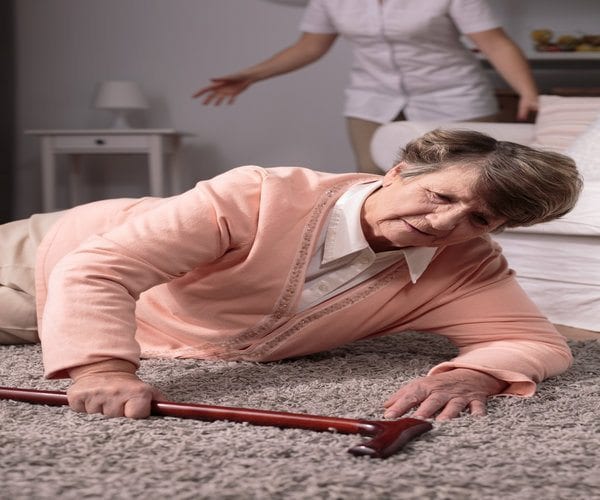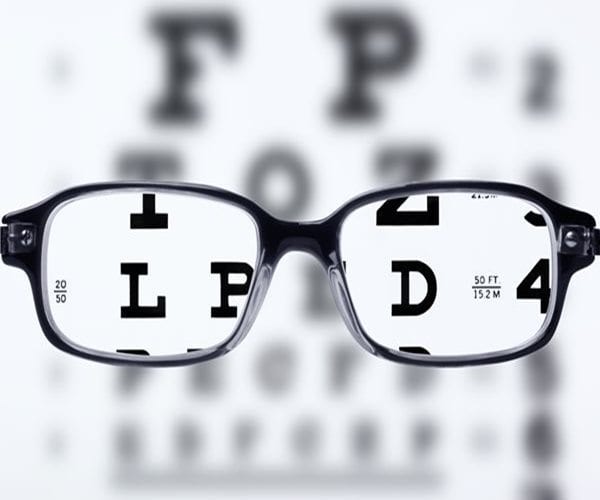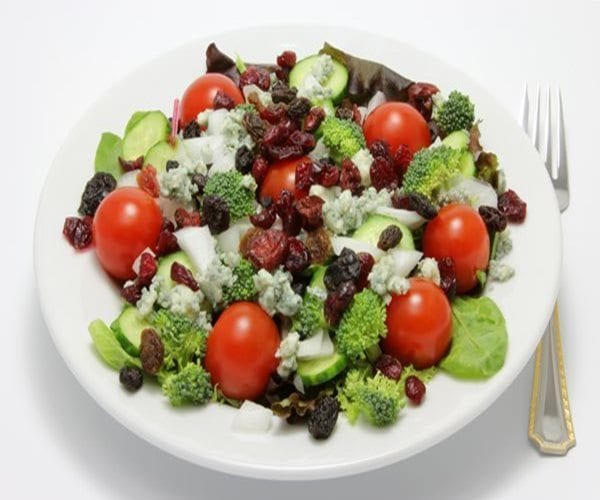Anti Aging
Back Clinic Anti Aging Chiropractic and Functional Medicine Team. Our body is in a constant and never-ending battle for survival. Cells are birthed, cells are destroyed. Scientists estimate that each cell must withstand over 10,000 individual assaults from reactive oxygen species (ROS) or free radicals. Without Fail, the body has an incredible system of self-healing that withstands the attack and rebuilds what has been damaged or destroyed. This is the beauty of our design.
To understand the biology of aging and translate scientific insight into interventions that improve late-life health through treatments. It is useful to have a clear, consensus view on what exactly constitutes anti-aging treatment.
Since before the days of Ponce de Leon’s search for longevity, man has always been enticed by the chance of eternal youth. Chiropractic care with its health movement is a powerful method of stabilizing and enhancing this self-healing ability. Dr. Alex Jimenez discusses concepts surrounding the anti-aging pandora.
.

by Dr Alex Jimenez DC, APRN, FNP-BC, CFMP, IFMCP | Anti Aging
When older women fracture a hip, they usually don’t get bone density tests that might show whether they need treatment to help prevent more broken bones, a recent U.S. study suggests.
“Osteoporosis screening after hip fracture is so important because there are a number of highly effective and relatively low-risk treatments available that can substantially reduce future fracture risk,” said lead study author Catherine Gillespie of the AARP Public Policy Research Institute and George Washington University in Washington, D.C.
For the study, researchers examined insurance data on medical care and prescription use for 8,359 women over 50 who had a hip fracture between 2008 and 2013.
None of the women had a prior history of osteoporosis, hip fracture, or taking medications to improve bone density.
More than half of the women in the study were at least 80 years old when they first fractured their hip. Most had multiple chronic medical problems.
Within six months of experiencing their first hip fracture, just 17 percent of the women got tested for osteoporosis or received a treatment for the condition, researchers report in the Journal of Bone and Mineral Research.
After one year, only 23 percent of the women had been screened or put on treatment for osteoporosis.
During the study period, use of bone mass measurement tests increased among women 65 and older but declined among women from 50 to 64.
Over the same timeframe, the rate of osteoporosis drug use remained constant for women aged 50 to 64 but declined among older women in the study.
Seeing a primary care doctor after fracture was the strongest and most consistent predictor of osteoporosis assessment or treatment, the study found. Women with private health insurance and higher income also appeared more likely to get screening and treatment.
One limitation of the study is that researchers lacked data on women who were uninsured or covered by Medicaid, the government health program for the poor.
They also lacked data on some interventions used to strengthen bones and help prevent future falls such as calcium and vitamin D supplements, counseling on exercise and fall prevention, or home repairs and modifications to make day-to-day life safer to navigate.
Even so, the study confirms a long recognized gap in routine osteoporosis care for patients with hip fractures, said Dr. Matthew Drake, a researcher at the Mayo Clinic in Rochester, Minnesota, who wasn’t involved in the study.
“Almost all patients who have a hip fracture should be screened for osteoporosis as this will allow their provider to assess their bone mineral density, and will also establish a baseline so that if pharmacologic or other treatment approaches are chosen there is data against which to compare later in order to determine how the therapy is working,” Drake said by email.
“If a woman or man has a hip fracture, she/he should speak with her/his doctor about getting screened for osteoporosis and strongly consider starting therapy,” Drake added. “As this study clearly shows, this screening and treatment continues to occur at a rate which is abysmal.”
SOURCE: http://bit.ly/2m4InBt Journal of Bone and Mineral Research, online February 23, 2017.

by Dr Alex Jimenez DC, APRN, FNP-BC, CFMP, IFMCP | Anti Aging
Waving white pom poms in the air, dozens of grey-haired cheerleaders in matching red and white uniforms hop and skip to K-pop music that fills the practice room.
Halfway into their two-hour practice session, most of the elderly dancers are panting and sweating, but do not let their bad knees or back pain stop them from what they say is keeping them healthy and youthful.
“Because I come here, I don’t need to take any medicine,” said 82-year-old Oh Geum-Nyu. “Although I’m ageing on the outside, this keeps me young at heart.”
Oh is one of the oldest members of Cheer Mommy, a 30-member cheerleading squad with an average age of 75, based in Samcheok, on South Korea’s east coast.
Life expectancy in Asia’s fourth-largest economy is accelerating rapidly, and for women born in 2030 it could stretch to nine decades on average, the longest in the world, according to research published in The Lancet medical journal.
The study by researchers at Imperial College London noted improved nutrition and broader access to health care as some of the reasons behind the phenomenon.
Some South Korean experts also point to social factors behind longevity.
“Their love for informal gatherings and forging new personal bonds can be a source of energy,” said Chung Soon-Dool, a social welfare professor at Ewha Women’s University in Seoul.
Most South Korean women in their 60s and older spent much of the lives in a strongly patriarchal society where women were expected to stay at home and raise the children.
Some are now embracing pursuits of their own choosing for the first time after retiring as the “caretaker”.
“I was done raising my seven grandchildren when my friend told me about this place,” said Cheer Mommy member Ahn Young-Ja, 65.
Lee Pal-Soon, 82, who also takes singing classes when she is not cheerleading, said she was enjoying the “second chapter” of her life after marrying off her five children.
Some are choosing to keep their brains active by going back to school, such as 88-year-old Kim Soon-Sil, who is among some 370 students aged 60 and up studying at Ilsung Women’s School in Seoul.
Kim, who grew up under Japan’s 1910-1945 colonial rule of Korea, had to leave school at 13 and it was not until seven decades later that she could fulfill her longing to continue her studies in history and English.
“I can feel small changes to my health every day, but if my health permits, I want to enroll in university,” said Kim.
South Korea’s government has rolled out various welfare programmes to accommodate its rising senior population — its men are also set to become the world’s longest-lived, according to the Imperial College study — including opening more community centres and organising leisure activities for the elderly.
But experts say the cost could become crippling in the face of a looming demographic crisis in the country with the world’s lowest birthrate.
Around 6.5 million out of the country’s 50 million population were 65 years or older in 2015, and in the next 10 years, one out of five South Koreans will be retired, according to a Statistics Korea report in December.
The country’s working age population started declining last year, it said, and by 2065 it will be overtaken by the number of retirees.
“It’s the question of who will cover the increase in social security cost,” said Professor Chung. “It wouldn’t be a problem if the number of young people were also rising, but that’s not the case.”
Authorities need to consider raising the retirement age, said Ha Jung-Hwa, social welfare professor at Seoul National University.
“It’s important the government introduces new policies to keep healthy and skilled senior citizens longer in the job market,” she said.
Cheer Mommy started out as a local authority leisure programme, but the elderly squad now regularly travels across the country to compete in national tournaments against rivals decades their juniors.
With the youngest member aged 63, the choreography lacks dynamic stunts like back flips or somersaults. It takes them twice as long to remember the routines, and instructor Yoon Bok-Ja said: “They are slow like turtles but they don’t give up until they are perfect.”
The bubbly grannies quickly changed into their next uniform — graffiti-printed jerseys, white tracksuit bottoms and black baseball caps — for a number set to Gangnam Style star Psy’s latest hit Daddy, chanting: “Hip hop! Youth! To 100 years!”

by Dr Alex Jimenez DC, APRN, FNP-BC, CFMP, IFMCP | Anti Aging
A combination of vitamin D supplements and certain dairy foods may protect against age-related bone loss, a new study indicates.
Consumption of milk, yogurt and cheese was associated with higher bone mineral density in the spine and less bone loss in the hip among older adults — but only if they also took vitamin D supplements, researchers said.
Vitamin D stimulates calcium absorption, which aids in bone building and prevention of bone loss, according to the researchers from Harvard-affiliated Hebrew Senior Life, and the University of Massachusetts, Lowell.
This study is significant because it looked at dairy products other than just milk, and it “clarified that the association of dairy foods with bone density is dependent on adequate vitamin D intake,” said lead author Shivani Sahni.
“However, additional studies are needed to confirm these findings,” she added in an institute news release. Sahni is director of the nutrition program at Hebrew Senior Life’s Institute for Aging Research.
An estimated 10 million Americans older than 50 have osteoporosis, a disease marked by low bone mass and progressive deterioration of bone tissue. Osteoporosis increases the risk of fractures, loss of physical function, decreased quality of life, and even death.
Another 44 million Americans have low bone density, increasing their risk of fractures, according to the National Osteoporosis Foundation.
Study participants were enrolled in the long-running Framingham Study, which began in 1948 and followed the health and habits of residents of Framingham, Mass.
The study was funded by the U.S. National Institute of Arthritis and Musculoskeletal and Skin Diseases. The results were published March 1 in the Journal of Nutrition.

by Dr Alex Jimenez DC, APRN, FNP-BC, CFMP, IFMCP | Anti Aging
Squinting while texting? Always losing your reading glasses? An eye implant that takes about 10 minutes to put in place is the newest in a list of surgical repairs for the blurry close-up vision that is a bane of middle age. But who’s really a good candidate to toss their specs?
“It’s not bringing anybody back to being 20 again,” cautioned Dr. Shilpa Rose, a Washington ophthalmologist who tests whether patients’ eyes are healthy enough to qualify. “But it decreases the need to rush to get that pair of reading glasses every time you want to send a text or read an email.”
Nearly everybody will experience presbyopia at some point, usually starting in the mid-40s. At first you may notice yourself holding restaurant menus at arm’s length. Eventually, even in good light, reading becomes a blur.
How well you see has to do with how light is directed through the natural lens to the back of the eye. That lens stiffens with age, losing its ability to shift and bend light so that it becomes more difficult to focus close-up.
The usual options are magnifying drugstore reading glasses or, for people with other vision problems, bifocals, multifocal contact lenses or what’s called monovision, correcting for distance vision in one eye and near vision in the other.
“I have glasses everywhere — the bedroom, the office, the kitchen,” said Christianne Krupinsky, 51, of Marriottsville, Maryland, who’d never needed them until presbyopia struck. “Getting ready in the morning, even to put on jewelry I can’t see the clasp. It’s so frustrating.”
And while surgery always carries some risk, corneal inlays that are implanted into the eye’s clear front surface are getting attention because they’re removable if necessary.
“It’s not magic. It’s surgery. People have to remember this is not one and done,” but requires post-surgical exams and care, said Dr. Deepinder K. Dhaliwal of the University of Pittsburgh Medical Center, a corneal specialist who is watching studies of the inlays.
Krupinsky was a little nervous while lying on the operating table to receive the new Raindrop near vision inlay.
“The most you’re going to feel is pressure,” promised Washington refractive surgeon Dr. Mark Whitten, applying numbing drops to her left eye.
A gel-like device that looks like a miniature contact lens, the Raindrop is smaller than the eye of a needle. It’s the first implant to treat presbyopia by changing the cornea’s shape, making it steeper to alter how light passes through.
It’s placed in only one eye; both eyes still see at a distance. Patients can test-wear a single contact lens to be sure they’ll like the effect before choosing surgery.
Rose, the ophthalmologist, checked for dry eye, underlying diseases like glaucoma, and whether the corneas were thick and healthy enough to implant before turning Krupinsky over to her surgical partner.
“Just look straight up,” Whitten said as he used a laser to slice a flap in Krupinsky’s cornea. He centered the Raindrop inlay over her pupil and lowered the flap to seal it in place.
Minutes later, Krupinsky read lines on an eye chart she previously couldn’t make out without glasses, albeit still a little blurry. She’ll need eye drops for several months as her cornea heals so vision can sharpen.
Maker ReVision Optics Inc. is gradually training eye surgeons to use the Raindrop properly, after the Food and Drug Administration approved it last summer based on a study of 373 people whose only vision problem was moderate presbyopia. Two years later, 92 percent had good near vision, 20/40 or better without glasses, in the implanted eye.
Potential side effects include infection, dry eye, glare, or corneal problems such as scarring. About 7 percent of study participants had the implant removed, mostly because they weren’t satisfied with their vision or experienced a haze or clouding of the cornea. Most returned to their pre-surgical vision, although one had lingering haze.
Other surgical options:
—Another FDA-approved corneal inlay, the Kamra, is a doughnut-shaped device, also used in one eye and removable. It works like a pinhole camera, improving vision by focusing light through the center of the pupil.
—A more invasive operation replaces the natural lens in each eye with an artificial one, named Symfony, that can focus both near and far. Approved for cataract surgery, it also is being offered as a presbyopia fix for the middle-aged who don’t yet have cataracts. Unlike inlays, artificial lenses can’t simply be removed.
Insurance doesn’t cover elective presbyopia surgery. Rose said the inlays average about $4,000 to $5,000, while the artificial lens in both eyes can cost twice as much.
Patients should consult a surgeon experienced with all the options who can determine which best suits their eyes, advised Pittsburgh’s Dhaliwal.
Each has pros, cons and unknowns. For example, elective lens replacement isn’t for the very nearsighted because they’re at higher risk for a vision-threatening complication, Dhaliwal said.
And the Raindrop hasn’t been studied in people who years ago underwent LASIK surgery to correct nearsightedness. That didn’t deter Mike Gray, 52, of Haymarket, Virginia, who lost his reading glasses so often that he bought bulk packs. To implant the inlay, Whitten had to avoid cutting the cornea in the same place as Gray’s long-ago LASIK, and advises such patients to pick a surgeon experienced in both procedures.
“Everything is very clear and getting better every day,” Gray said about a month later.

by Dr Alex Jimenez DC, APRN, FNP-BC, CFMP, IFMCP | Anti Aging
If you want to add years to your life, 10 daily servings of fruits and vegetables may be the best recipe you can follow, a new analysis suggests.
The benefits appear to come through lower rates of heart attack, stroke, cancer and early death. And if everyone found a way to get 10 daily servings of produce, 7.8 million premature deaths would be avoided each year worldwide, the British researchers estimated.
Exactly how much in the way of fruits and vegetables is that? Anywhere from 10 small bananas or apples to 30 tablespoons of cooked spinach, peas, broccoli or cauliflower — or roughly 800 grams of produce, the researchers said.
At least five servings (400 grams) of fruits and vegetables each day is what is currently recommended by many health agencies.
“Although five portions of fruit and vegetables is good, 10 a day is even better,” said study author Dagfinn Aune, of the School of Public Health at Imperial College London.
But even just over two portions a day made a difference in the review, the researchers added.
Eating 2.5 portions (200 grams) of produce on a daily basis was associated with reductions in: heart disease (by 16 percent); stroke (18 percent); cardiovascular disease (13 percent); cancer risk (4 percent); and premature death (15 percent).
The results for 10 daily servings were even stronger: a 24 percent reduced risk of heart disease; a 33 percent reduced risk of stroke; a 28 percent reduced risk of cardiovascular disease; a 13 percent reduced risk of cancer; and a 31 percent reduction in premature death risk.
“Fruit and vegetables have been shown to reduce cholesterol levels, blood pressure, and to boost the health of our blood vessels and immune system,” Aune said in a university news release.
“This may be due to the complex network of nutrients they hold. For instance, they contain many antioxidants, which may reduce DNA damage, and lead to a reduction in cancer risk,” Aune explained.
However, the study did not prove a cause-and-effect link between eating more fruits and vegetables and longer life.
“Most likely it is the whole package of beneficial nutrients you obtain by eating fruits and vegetables that is crucial in health,” Aune said.
“This is why it is important to eat whole plant foods to get the benefit, instead of taking antioxidant or vitamin supplements (which have not been shown to reduce disease risk),” Aune noted.
Together, the 95 studies the Imperial College London scientists analyzed included almost 2 million people.
In their review, the researchers also found signs that these types of produce seemed to confer the greatest benefits: apples, pears, citrus fruits, green leafy vegetables, cruciferous vegetables (such as broccoli, cabbage and cauliflower), and green and yellow vegetables (such as green beans, spinach, carrots and peppers).
The study was published Feb. 22 in the International Journal of Epidemiology.







